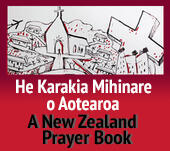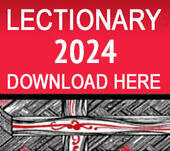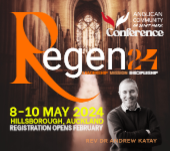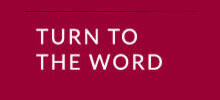When we look through the eyes of faith, it was no coincidence that John Osmers died on the 16th of June, the 45th anniversary of the Soweto student uprising, which in 1976 began the unravelling of the apartheid regime in South Africa.
His death also came on the eve of World Refugee Day, again no coincidence.
John’s life’s work enfleshed the mission he shared with Jesus recorded in Luke (4:16-21) to ‘stand with the poor, give sight to the blind, and free the oppressed’.
John saw himself as a bearer of Christ’s love, compassion, mercy and justice in the world and lived accordingly. Like St Paul, he often faced peril and hardship. Such was his faith.
John was a prophet and always had a heart for justice. For him, justice and love were two sides of the one divine person, together forming the creative essence of God. His Christian faith was at the root of all that he believed and did.
It provided him with a vision of what might be if justice was delivered and peace reigned in the hearts of people.
John’s theology was liberation theology, whereby, like the people at the time of Moses, he identified with the desire for freedom from slavery and a better life.
He had the ability not just to learn about liberation and freedom but to put it into practice. For this he paid a huge price over time, including frequent assassination threats. But like St Paul, he was never deterred.
His heart expanded with the passing of the years and grew to such an extent that in time it would embrace not just Africans marginalised through colonisation and apartheid, but also the vast numbers of refugees and the poor excluded from a reasonable life.
John had identified rampant capitalism as a root cause of poverty, violence and discrimination long ago and saw it as a sinful, exploitative and oppressive economic system, a festering sore creating and fuelling the racism he fought against all his life.
Early days
John grew up in Christchurch, went to school at Christchurch Boys’ High School and then to Canterbury University College where he completed an MA in English literature. As a student he read ‘Naught for Your Comfort,’ a book written by the English priest Trevor Huddleston that detailed his personal experience of the evil effects of apartheid in South Africa. John was very affected by this book.
He went on the mandatory overseas trip which included six weeks on a motorcycle riding around South Africa with a Black friend. There he saw first-hand the poverty, violence and racism that was apartheid and that experience confirmed his desire to work to change that system.
After further studies in London, John put himself forward for ordination in the Anglican Church. He trained at Mirfield in Yorkshire, was ordained in 1961 and spent three years working in the parish of Rawmarsh in Yorkshire.
In 1965 he went to Africa – not to South Africa as he had hoped – but to Lesotho the small kingdom in the Drakensburg mountains surrounded by and totally dependent on South Africa. Lesotho was home around 2 million people and was a very poor country.
His activities in Lesotho brought him to the attention of the South African authorities and in 1970 he was banned from entering South Africa, a move which galvanised him into further action.
John had remained a member of the Student Christian Movement(SCM) since his student days, and in 1973 he became General Secretary of SCM Lesotho.
He continued to support the Save the Children Fund, though he had come to see that the solution was not just a matter of handing out food and clothes to needy children – it had to be political. What was needed was a revolution. So in 1976 he joined the African National Congress (ANC).
In June 1976, 20,000 African students in Soweto protested against a law that said that all Black students should be taught in the white language of Afrikaans. Thousands revolted at that time 576 students were killed and 2389 wounded by police and government forces. As a result, hundreds of school students fled into Lesotho.
At that time, John was chairman of the Christian Council Refugee committee and he was responsible for finding these students’ schooling and accommodation.
Every week on his day off, he stayed overnight with the Soweto students and helped them to set up study groups on liberation and revolutionary topics including socialism and the ANC Freedom Charter.
On 5 July 1979, John opened a parcel bomb sent by the South African Security agency, which exploded, injuring him badly and severing his right hand. John’s sister, Elizabeth Gordon, flew to Lesotho to be with him and later took him to London for lengthy recuperation.
He returned to Lesotho, but on a later trip to Europe the following year, at Pretoria’s instigation, the Lesotho government banned him from returning.
John returned to New Zealand in 1981 to help with the campaign against the pending Springbok rugby tour. He toured up and down the country, speaking against it and educating people as to the evil that was the apartheid system. He spoke at public rallies, in churches, prisons and to the media.
He then returned to Southern Africa and became a parish priest in Molepolole in Botswana. ANC exiles often came to his house secretly at night and left early the next morning. John offered hospitality, shelter and counsel.
As a sign of authenticity, they used his ANC code name ‘Modesa’ meaning ’shepherd.’ In 1988, the Botswana security service warned him that a death squad had come into the country from South Africa to kill him. So he immediately left everything – even his address book – and fled to Zambia.
In Zambia
In 1994, the Church in Zambia created a new diocese called the Eastern Province. The area was vast and had been greatly neglected. The task ahead was great and John was elected bishop unopposed. For 5 years, John remained bishop and built up the diocese from scratch, until he reached the age limit of retirement. The diocese is now thriving.
Returning to Lusaka, John’s great concern had become refugees – in particular those from Rwanda and Zaire. After the genocide, Rwanda has often been held up as an example of the great African success story. But the situation is far more complex. For those in opposition to the government, it is a very dangerous place to live. John worked tirelessly right up until his death assisting and promoting refugee interests, including funding their studies from his pension and overseas donations.
Despite being an extraordinary Christian leader (who was blind in his final years), a giant of the spiritual life, a legend in Southern Africa, a towering figure for social justice internationally, John Osmers, who was awarded a CNZM by the New Zealand Government, was a very humble man and was happy to simply be part of local communities in Christchurch on his return visits.
He was always a welcome visitor at the Brighton parishes of St Faith’s and St Luke’s, at St Michael and All Angels and at the weekly Eucharist at the Catholic Worker community in Addington.
Few people in our time have lived the mission of Jesus ‘to stand with the poor and free the oppressed’ as well as John Osmers did.
Well done, good and faithful servant. May you rest in peace.
Fr Jim Consedine is a priest in the Catholic Diocese of Christchurch and has been a friend of Bishop John Osmers for 40 years.

















Comments
Log in or create a user account to comment.